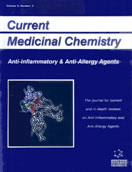Abstract
Nod proteins are defined as proteins carrying nucleotide-oligomerization domains (NODs) and are involved in regulation of immune responses and apoptosis. The Nod protein family contains 23 human members including Nod1, Nod2, cryopyrin, Ipaf, Apaf-1 and CIITA, as well as thousands of plant proteins, which are involved in pathogen-specific defense responses. A Nod protein generally contains an amino-terminal domain for binding downstream effector molecules, a central NOD and a carboxyl-terminal ligand recognition domain (LRD). Nod1 and Nod2 are involved in host recognition of small molecules that are components of bacterial peptidoglycan and activate nuclear factor kB (NF-kB) in response to sensing these molecules. This NF-kB activation occurs in a RICK- and IKK-dependent manner. The core ligand structure for Nod2 is muramyl dipeptide, a structural motif common in all bacteria, whereas the ligand for Nod1 is a dipeptide designated as iE-DAP, a motif found in only certain subgroups of bacteria. These molecules and their derivatives mediate host innate responses against bacteria and also function as immunostimulatory adjuvants through induction of cytokine secretion and co-stimulatory molecule expression. Although the mechanism is unknown, genetic and functional defects of Nod proteins are associated with several inflammatory diseases and immunodeficiency. These include susceptibility for Crohns disease and Blau syndrome (Nod2), three related inflammatory diseases (cryopyrin) and type II bare lymphocyte syndrome (CIITA). Functional analyses of mutant Nod proteins suggest a common molecular basis for these diseases.
Keywords: nucleotide-binding oligomerization domain, atp-binding cassette, caspase-recruitment domains, transcription factor
 12
12

